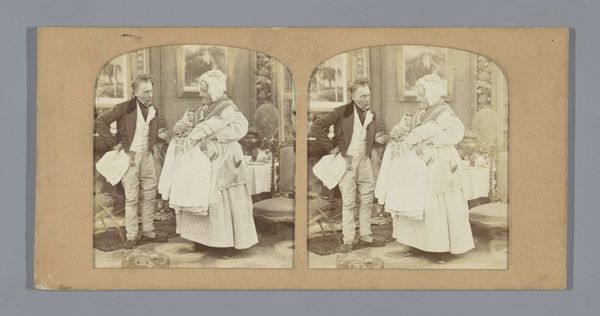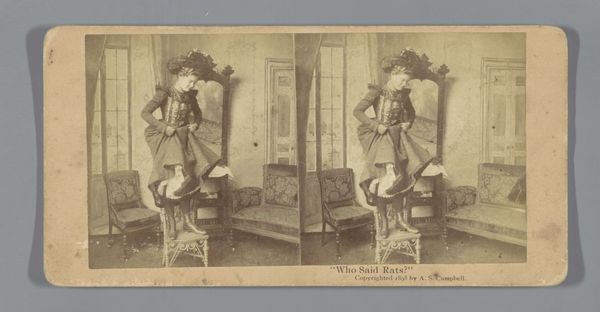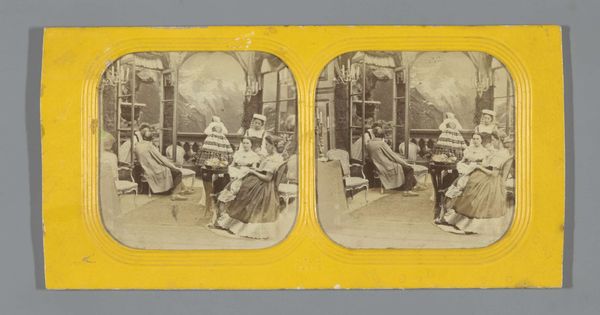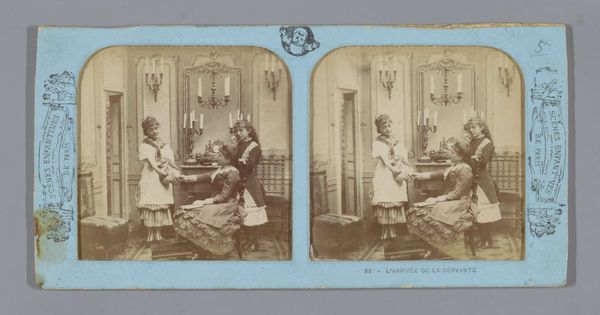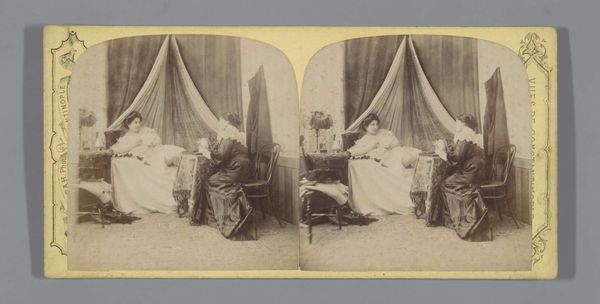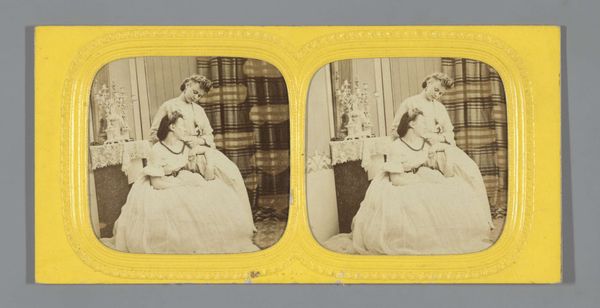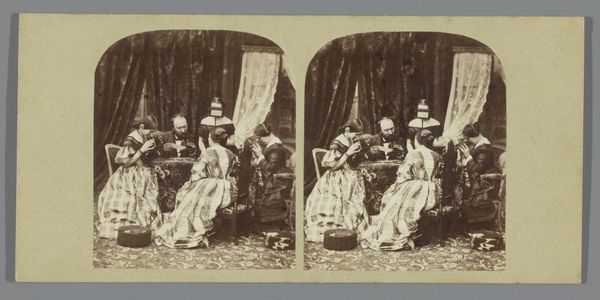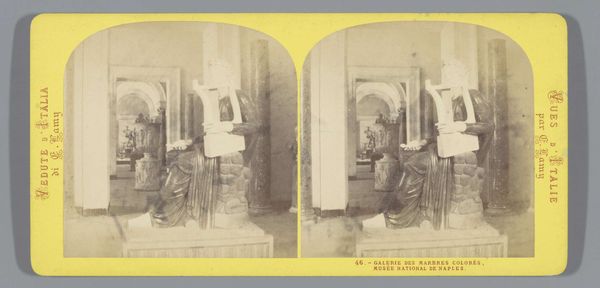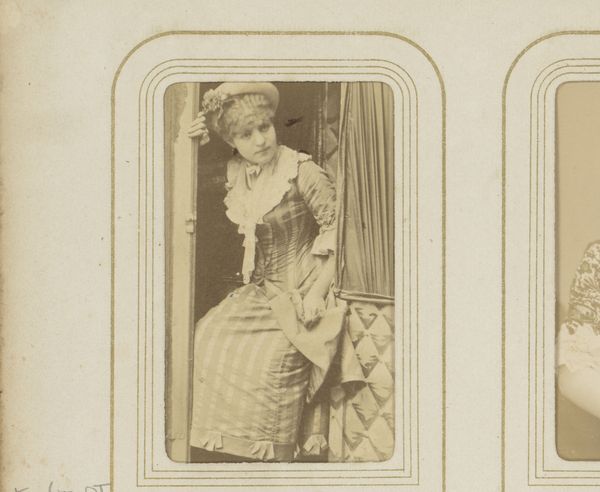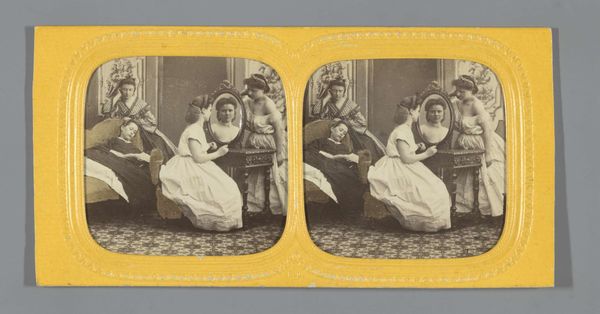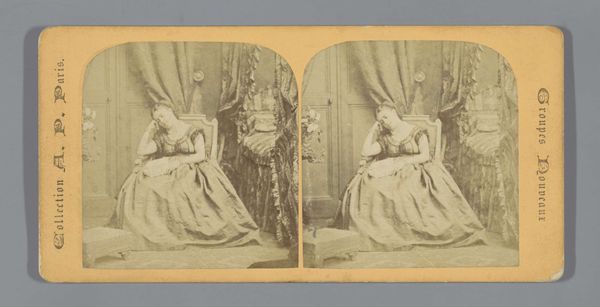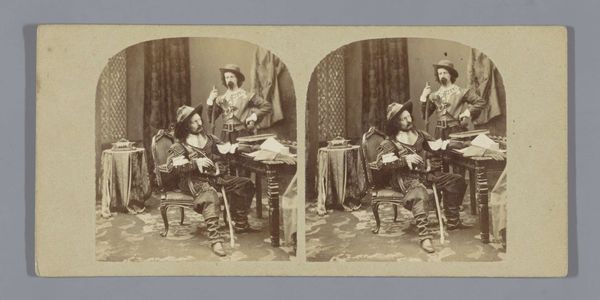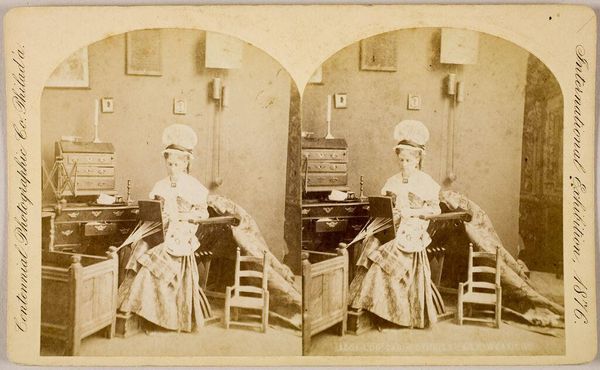
photography, gelatin-silver-print
#
portrait
#
photography
#
historical fashion
#
gelatin-silver-print
#
genre-painting
Dimensions: height 87 mm, width 177 mm
Copyright: Rijks Museum: Open Domain
Curator: Immediately, I sense a story—domestic tension caught in sepia tones. Is that a broken dish on the floor? Editor: It is. This is a gelatin-silver print, likely created between 1870 and 1880. It's titled "Young Woman in a Living Room with Broken Crockery on the Floor", and is attributed to H. Vogt. Look closely, and the scene tells a lot about material life and the performance of gender roles during this period. Curator: Performance indeed. There’s the "fallen woman" trope echoing—the ruined crockery a stand-in for compromised virtue, perhaps? Or simply a clumsy accident turned into a moralizing tableau? I'm drawn to consider this woman's status within that patriarchal era. Editor: Consider the context of the emerging photographic market; genre scenes like this catered to the burgeoning middle class keen to acquire morality lessons through imagery. It’s a produced reality mediated through a photographic process and presented as "truth." I also wonder about the laborer’s relationship to such commercial artistic efforts. Curator: I see a tension between art and labor as well. The woman is adorned in very elaborate clothing, emphasizing leisure, and she does hold this…white garment that suggests housework? Though I have a feeling its only a prop. I feel its performative in terms of fashion. Editor: Exactly. We're consuming an idealised reality—a manufactured aesthetic linked to commercial pressures and bourgeois expectations of behaviour. The quality of the photographic print here signifies artistry beyond a quick snapshot and that, in and of itself is communicating value. It reflects the status and availability of technology in creating value, and the expectation that it signifies progress and social mores. Curator: A morality play carefully crafted in the photographer’s studio. Considering that this piece attempts to recreate something we might have been exposed to while going through some turmoil that, historically, is a common shared human experience…but captured in a photograph such as this. A mirror to reflect on social issues perhaps? Editor: It becomes something quite self-referential by acknowledging this social construct. Considering how material factors shaped visual representation and its meaning adds depth to our understanding. Curator: So, through understanding both the artistic expression and how these materials influenced that, as well as gender within social contexts, we can see the impact these historical events had on photography as well. Editor: Absolutely, giving us a far more complete understanding than merely judging artistic talent alone.
Comments
No comments
Be the first to comment and join the conversation on the ultimate creative platform.
